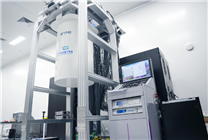Breakthrough in Quantum Computing: China Telecom Unveils "Tianyan-287"
Summary:
- China Telecom’s Quantum Research Institute announces the completion of the "Zu Chong No. 3" superconducting quantum computer, named "Tianyan-287."
- This revolutionary system operates with 105 data bits and 182 coupling bits, boasting processing capabilities 450 million times faster than current supercomputers.
- The initiative establishes a new model for computational power collaboration, paving the way for advanced applications in industries such as finance and pharmaceuticals.
China Telecom’s Quantum Research Institute recently marked a significant milestone in the realm of quantum computing with the completion of the "Tianyan-287," a superconducting quantum computer built on the advanced "Zu Chong No. 3" architecture. This cutting-edge system was developed collaboratively by the China Telecom Quantum Group and the Hong Kong University of Science and Technology (HKUST) Guodun Quantum, showcasing a critical leap forward in quantum technology.
Unmatched Processing Speed
The "Tianyan-287" is equipped with an impressive configuration comprising 105 data bits and 182 coupling bits. This enables the quantum computer to tackle specialized problems at a staggering speed—450 million times faster than the fastest traditional supercomputer available today. Such capabilities promise to radically transform the landscape of computational tasks across various sectors.
Moreover, this advanced quantum computer is set to be integrated with the "Tianyan" quantum cloud platform, which has recently opened its services globally. This integration marks a crucial advancement in the practical application of quantum computing within China, establishing the nation as a leader in the field.
Localized Supply Chain Innovations
At the heart of this breakthrough is a domestically produced hardware system. The research and development team behind "Tianyan-287" has successfully engineered significant advancements throughout the entire superconducting quantum computing supply chain. One of the notable innovations includes the implementation of key components, such as large-capacity dilution refrigerators and precise measurement and control electronics, which together form a complete localized supply chain.
Additionally, the team developed an AI-driven chip parameter automatic calibration system that drastically reduces the traditional debugging timeline from weeks down to mere hours. This efficiency not only streamlines the development process but also enhances overall reliability, positioning China favorably in the competitive landscape of quantum computing.
Hyper-Converged Architecture
A remarkable feature of the "Tianyan-287" is its hyper-converged architecture, which directly connects the quantum computing hardware to supercomputing systems via the "Tianyi Cloud." This innovative setup facilitates millisecond-level interactions between quantum and classical supercomputing environments, ensuring a seamless integration of new computational paradigms.
By creating a comprehensive tool system that encompasses hardware and ecosystem elements, the "Tianyan-287" paves the way for enhanced collaborative computational scheduling. This positions China at the forefront of quantum computing innovation, enabling the nation to leverage its technological advancements across a range of practical applications.
Implications for Future Applications
The introduction of "Tianyan-287" not only affirms China’s preeminence in the quest for quantum superiority but also establishes a robust model for future collaborative scheduling of computing power. The implications of this achievement are profound, particularly in fields such as financial modeling and drug research and development.
As quantum computing continues to evolve and its applications become more widespread, the potential for impactful advancements in various industries becomes clearer. The capability to solve complex problems at unprecedented speeds could lead to significant breakthroughs in pharmaceuticals, computational finance, and many other sectors that rely heavily on data analysis.
In conclusion, the successful development and implementation of the "Tianyan-287" superconducting quantum computer mark a watershed moment in the evolution of quantum technology. This achievement not only highlights China’s commitment to advancing its scientific capabilities but also its willingness to invest in future-oriented technologies that have the potential to reshape industries and redefine problem-solving methodologies on a global scale.
As quantum computing continues its rapid evolution, stakeholders across the spectrum will undoubtedly be watching closely to see how advancements in this arena will usher in a new era of computational intelligence and drive the future of technology.





